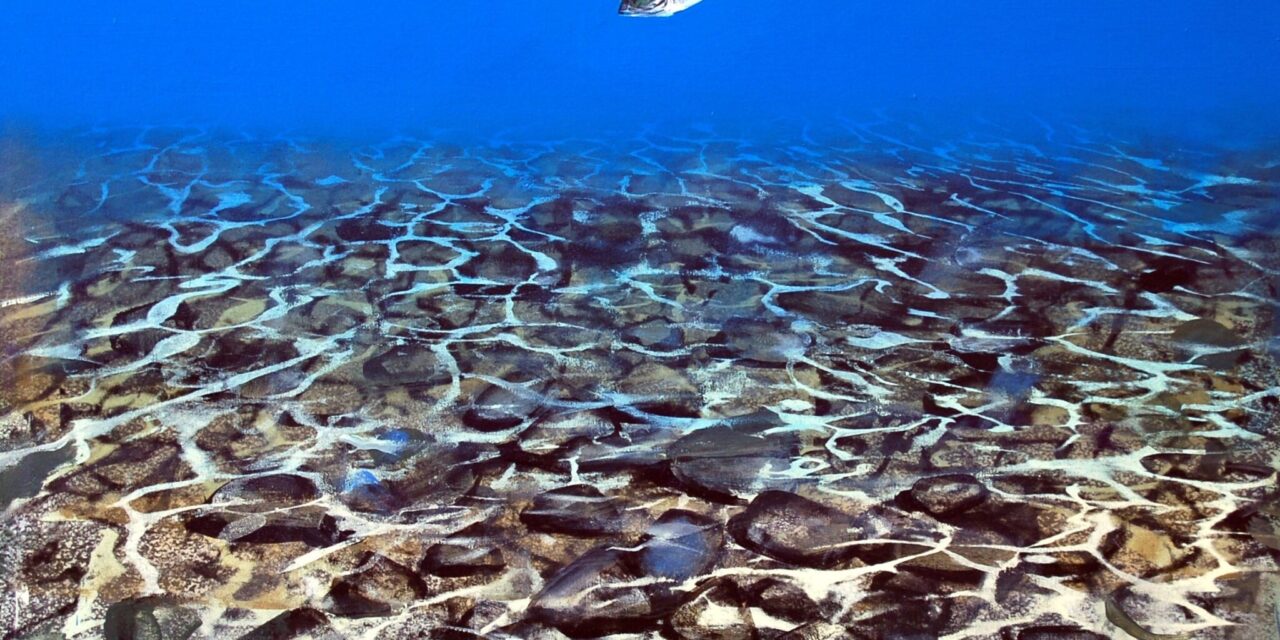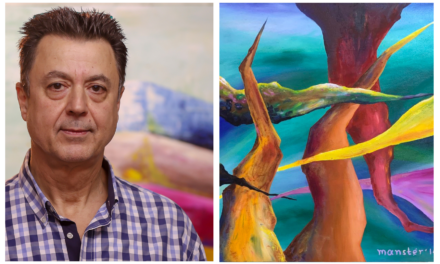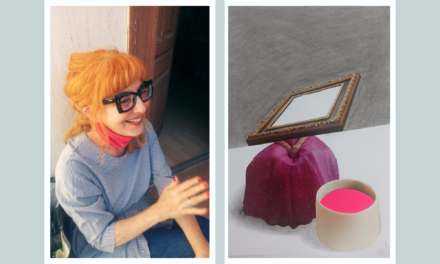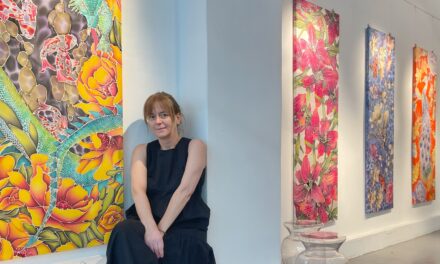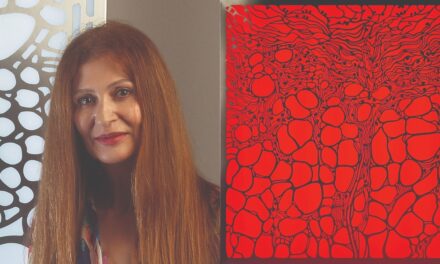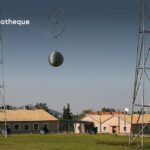Inspired by nature, symbolism and surrealism, Manolis Saridakis’ dreamlike paintings, are crafted with meticulous intentionality, creating a serene yet impactful atmosphere. The vivid dialectic between reality and art, the visible and the invisible as well as space and time is a key element in his art. Elegant arrangements, bringing together blue skies, deep seas, windows, rocks, seagulls and boats, convey a sense of narrative and emotional depth.
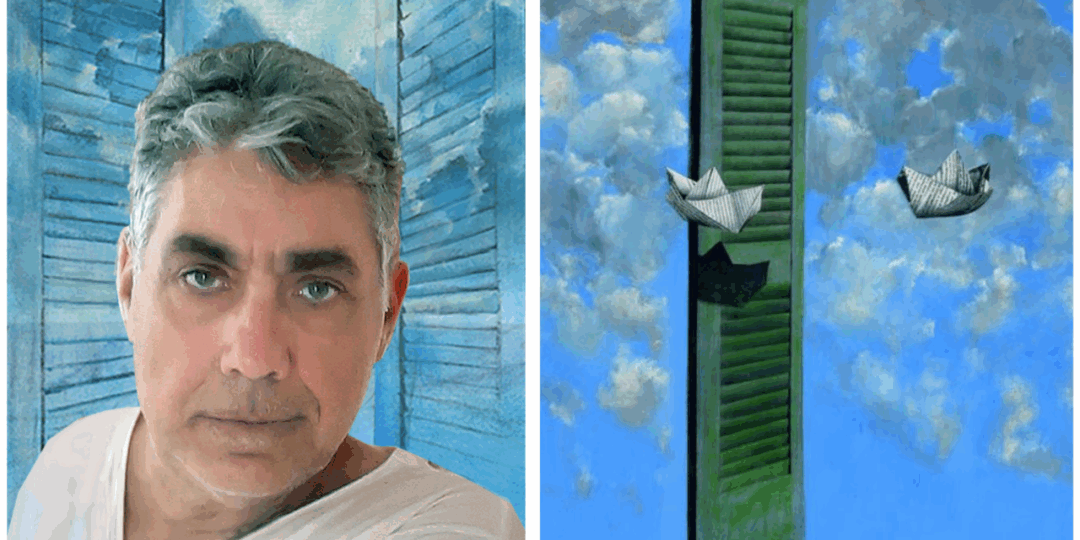
Defying logic and conventional forms, Saridakis creates a parallel reality that evokes mysterious and irrational aspects of human experience. Through the careful calibration of scale, perspective, and color, he challenges perceptions, inviting the viewer to explore the extraordinary within the ordinary.
By recontextualizing familiar objects and imbuing them with new meanings, he sparks conversations about the nature of reality and the significance of our surroundings. Through his art, he introduces a sense of exploration and discovery, inviting viewers to contemplate the ineffable and embrace new perspectives.
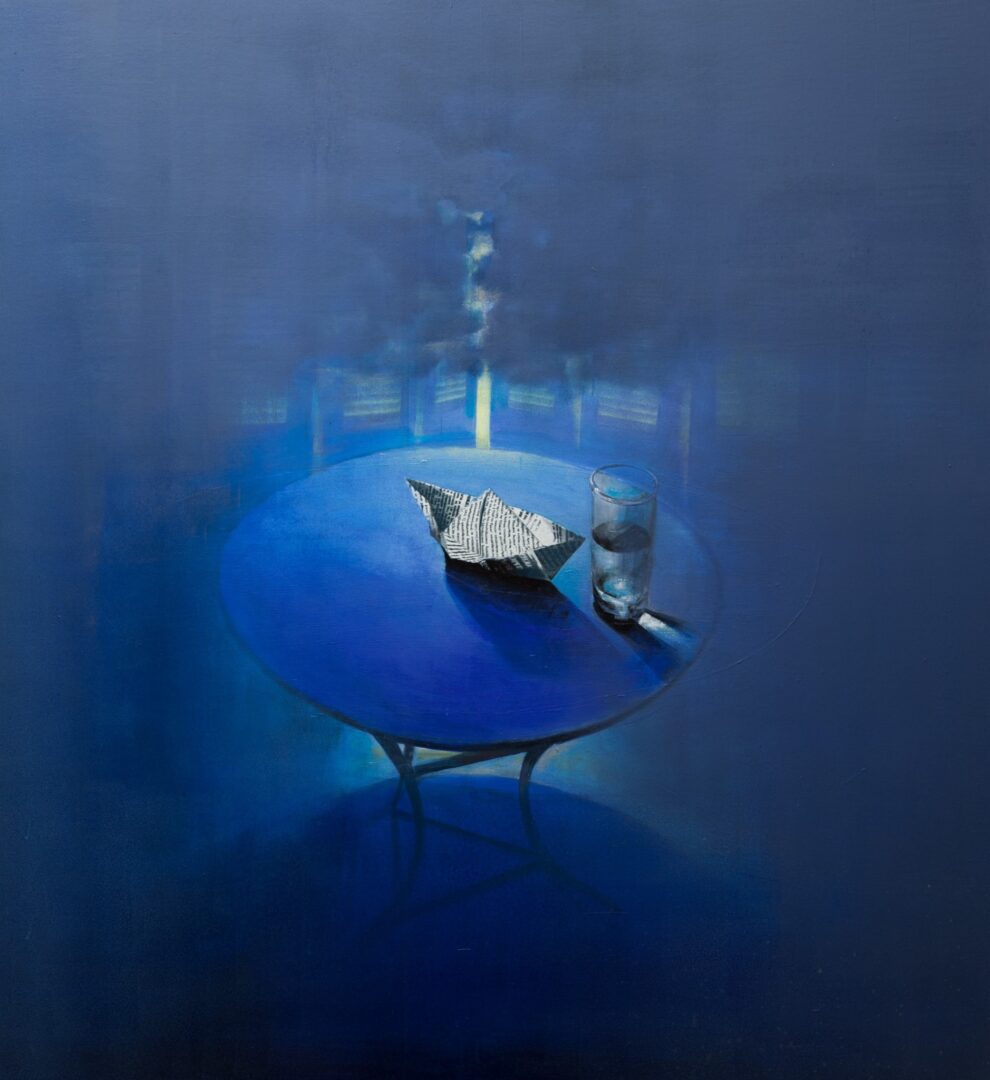
Manolis Saridakis was born in Heraklion, Crete, in 1961. His father, Dimitrios Saridakis, was also a painter. He studied at the Athens School of Fine Arts from 1981 to 1986. He speaks to Greek News Agenda* about his journey through the endless blue of the sea and the sky and the way he approaches reality through his art.
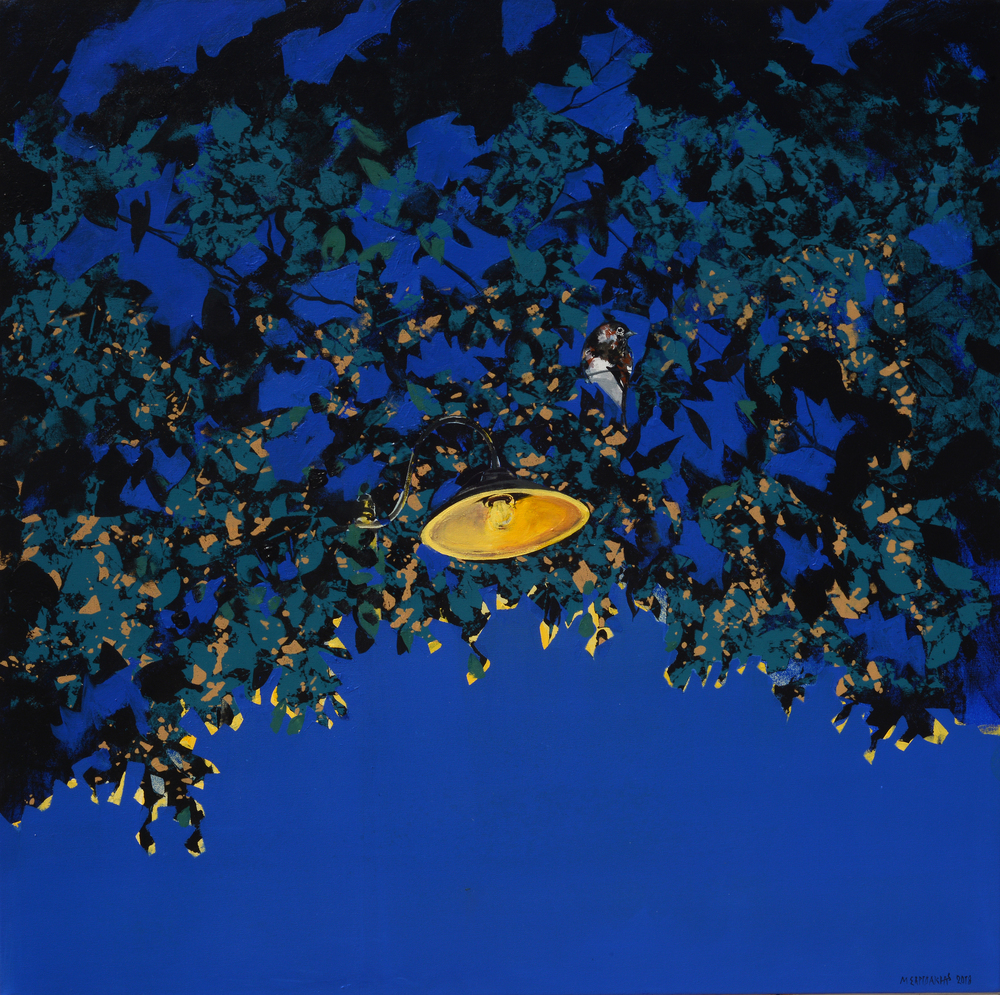
What artistic movements have influenced your art?
At some point, during my artistic trajectory, I realized that behind forms and shapes, there is a moment in time, a continuity and a flow of things; that behind visual images there are mental images, unformed ideas and concepts. This is the way surrealism is revealed. It becomes obvious that, along with what we perceive as reality, lies a world of parallel and multiple realities. There is a side of things we are unable to realize at first sight. The debate about the conscious and the unconscious, as well as surrealist painters, especially René Magritte, have strongly influenced the way I see things.
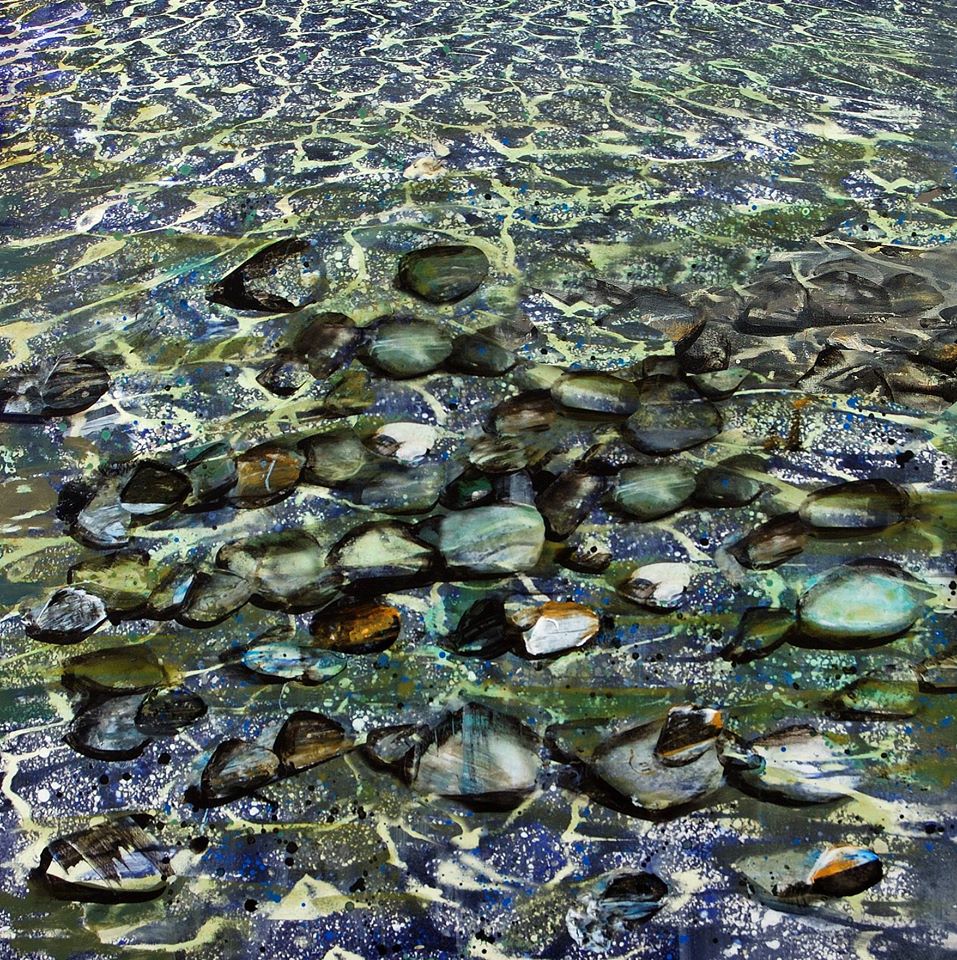
The sea, the light and the sky play a prominent role in your work. Which purpose do they serve?
It all starts from the sea, where our deep existentialism is diffused through the liquid element to the horizon. The sky dominates the vital space, defining metric relationships and scales. This is the moment of absolute harmony with nature. It is within this context that one perceives his origins and consolidates his continuity. Existentialism is transformed into experience and this is the beginning of interpretations through painting.
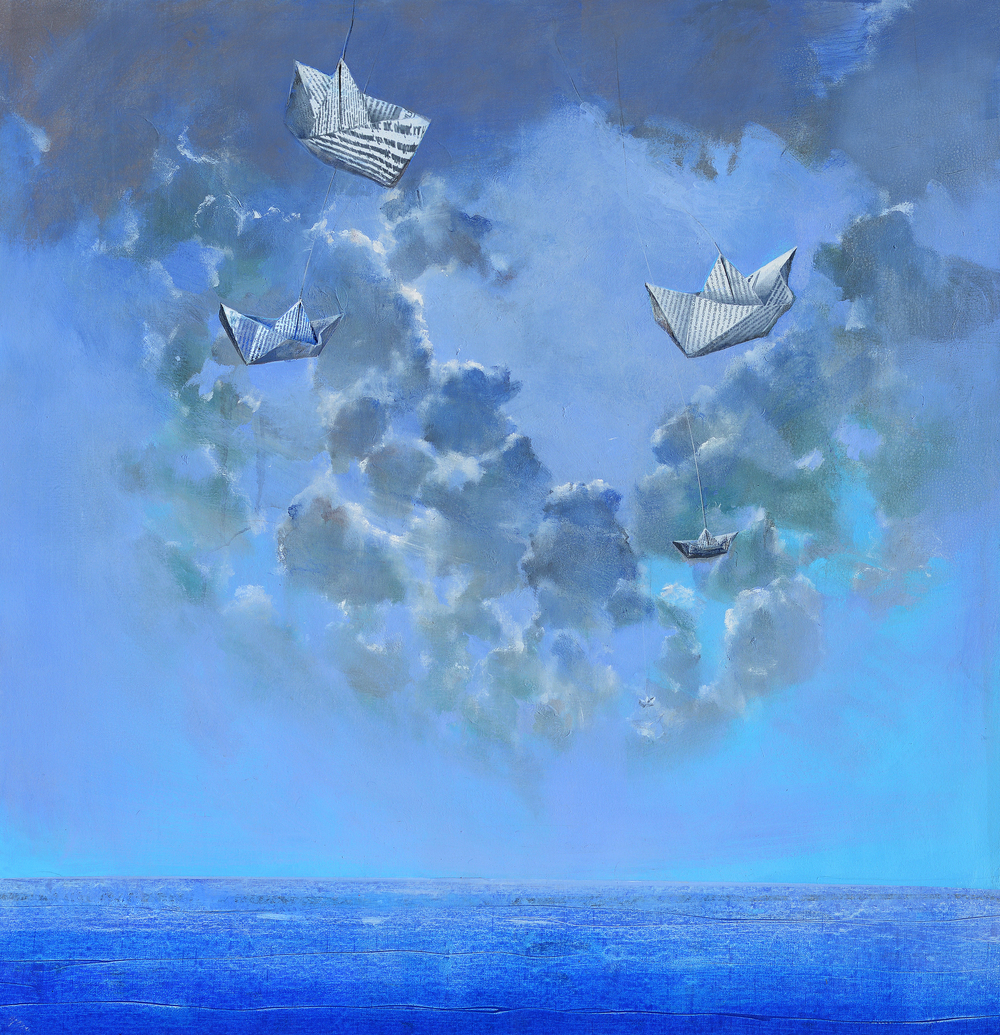
In your works everything seems dreamlike and balanced. Does this condition correspond to reality?
The work of art is meant to transcend reality. It comes with its own reality that is defined from the outset by the unconventional process of its creation, by its sequence and its connection with other works, that have already been created or will be created at some point.
It might converge with other works of art in terms of style, form entities or even belong to a broader painting period, thus forming part of an uninterrupted sequence.
As far as I am concerned, transcending reality and the poetic aspect of things is natural. It has to do with the state of things. Nature should be left to preserve its character so that it will be able to form the basis of human expression. And this should be man’s main concern over time.
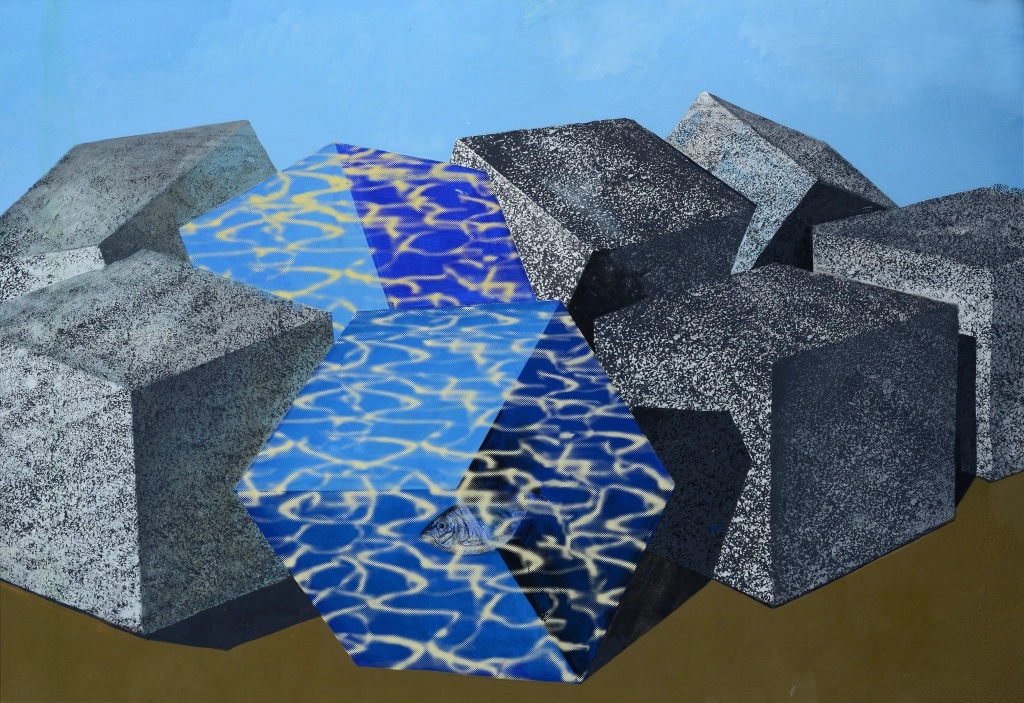
What is the purpose of the total absence of the human figure in your work?
Figures do exist….. In a way, however, they have been moved out of the canvas. They are facing the viewer, following the painter’s gaze that records a moment in time and at the same time oversees the process. The artist’s gaze brings together the personal element with the collective one and ultimately to the human figures that, although are not part of the painting, they create an interaction between the painting and the viewer, prompting the activation of the process.
Intro photo: Highlights Beneath the Silver Fish
*Interview by Dora Trogadi
TAGS: ARTS

